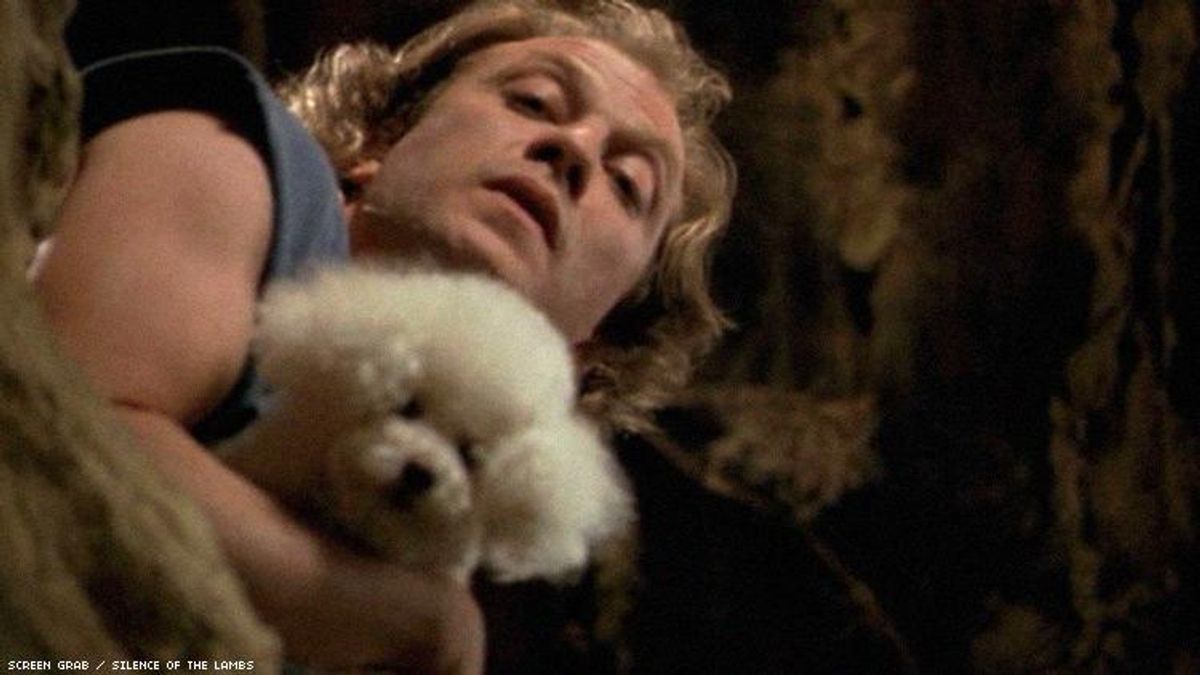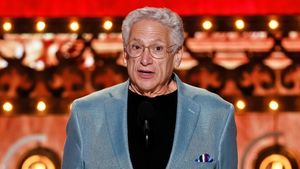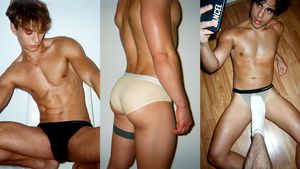Outside the Dorothy Chandler Pavilion in Los Angeles, the red carpet was rolled out, the limos were arriving, and police in riot gear were descending on hundreds of gay rights protesters.
This was the scene at the 1992 Academy Awards, where activist group Queer Nation staged a protest that devolved into chaos, with objects thrown at vehicles, punches thrown, arrests made, and "Fag" stickers slapped on 24-foot-tall Oscar statues. Queer Nation and many other LGBT people were furious at Hollywood for what they saw as a pattern of demented, homicidal queer characters.
The transgender murderer Buffalo Bill, one of the main antagonists of Best Picture nominee (and eventual winner) The Silence of the Lambs, especially provoked Queer Nation's ire. But there was also the cabal of gay men who appeared connected to the president's assassination as depicted in Oliver Stone's JFK, another Best Picture nominee. Basic Instinct was about to open in theaters, with a bisexual killer who had sex with men before stabbing them to death with an ice pic.
Since the fracas took place over two hours before the Academy Awards began, most of America was completely unaware of the protest (not to mention the controversy that sparked it). "We were told that we would be given room on the sidewalk," a protester named Annette Gaudino told The Advocate in 1992. "The next thing I know, the police just came out swinging."
It's a surreal scene to imagine, even though, 24 years later, threats of protests still roil the Academy Awards. Though the Oscars -- and the movie industry at large -- have been taken to task for its glaring lack of racial diversity, mainstream movies depicting LGBT heroes or protagonists like The Danish Girl and Carol are part of this year's event, and films including Boys Don't Cry, The Kids Are All Right, Milk, Brokeback Mountain, and United 93 have all been nominated for or won Academy Awards since the contentious 1992 ceremony. At first glance, it would seem actions like Queer Nation's are now obsolete. Would a new movie about a gay rapist or a transgender cannibal now be greeted with a shrug? Even with all the positive momentum, some aren't convinced we've crossed the tipping point where LGBT villains don't represent something bigger than themselves -- and don't do harm to how queer people are perceived.
"We'd still have the same reaction [to an LGBT villain as Queer Nation did]," says John Griffiths, president of the Gay and Lesbian Entertainment Critics Association and Us Weekly's TV critic. "Villains who are or are revealed to be [gay] remain hoary cliches and usually come from the mind of a lazy, thoughtless writer."
Even if queer characters aren't skinning women or bludgeoning men, the trope of them being not quite right in the head remains ever present, Griffiths says.
"From Looking for Mr. Goodbar to even the well-intentioned American Beauty to Nymphomaniac, we've had a litany of self-loathing or downright insane LGBTQ antagonists in movies, especially," he says. "Characters that are sometimes meant to be shorthand for 'See what society does to gays!' but always seem to just stand for gawk material. Why can't Bond be bi instead of his taunter?"
Even with LGBT characters in film becoming less sensational, they're still rare. GLAAD's Studio Responsibility Index from last year found that only 17 of 102 mainstream films featured LGBT characters. "The majority of these characters were minor roles or cameos, and GLAAD found that many of these were outright defamatory representations," Matt Gouttebroze, the organization's media strategist, wrote in a statement.
With such a dearth of queer characters, it's not a stretch to imagine an adverse reaction to a high-profile LGBT character depicted as crazed and murderous. The response now would likely be more muted, though. For one thing, Hollywood has not remained frozen in amber even if its representation remains less than ideal.
"I think the capacity for filmmakers to get queer lives wrong remains unabated, but the big difference is the context in which those lapses in judgment occur," says Alonso Duralde, film reviews editor for The Wrap and cohost of the Linoleum Knife podcast. "LGBT activists had valid reasons for having issues over Silence and Basic Instinct, but much of that anger came out of the fact that we were generally invisible on the big screen, making these homicidal characters all the more irritating."
Things have changed since 1992, Duralde says. Even portrayals of LGBT villains have been more human and three-dimensional since Silence, JFK, and Instinct. Films like Monster, The Talented Mr. Ripley, and Notes on a Scandal come to mind.
"The ensuing decades have seen many queer filmmakers finding not only their voices but also the means to tell their stories to the world," Duralde says, "and while there's still a long way to go, audiences have a fairly broad range of choices when they want to see LGBT characters on the big screen."


















































































